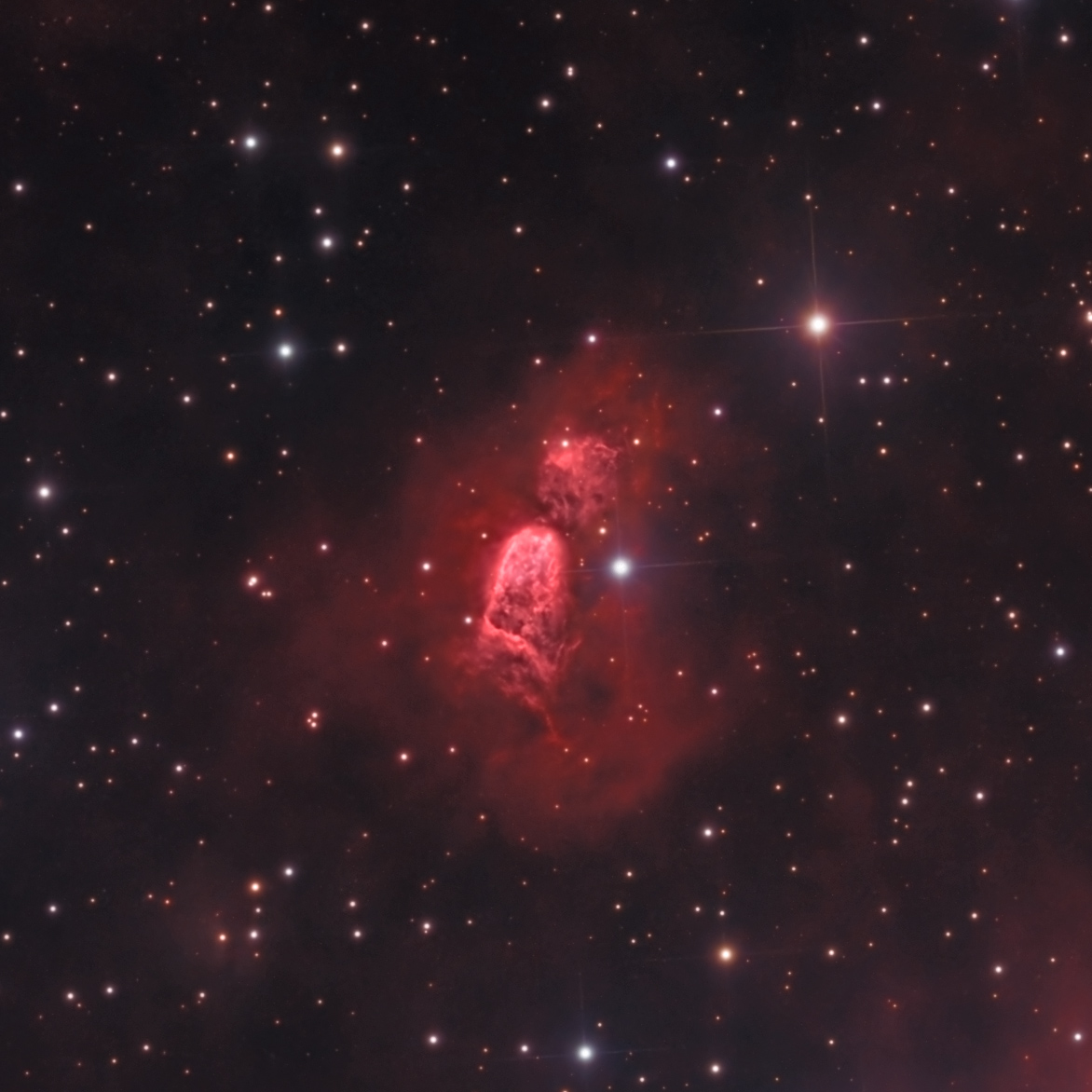Technical Information:
Ha:OIII:L:R:G:B: 570:660:375:105:180:240 (a total of over 35 hours of light-frame exposure time); luminance, red and green exposures were all 15-minute exposures;
blue all 20-minute exposures; Ha and OIII were all 30-minute exposures. The luminance layer consisted of a blend of: (i) 25 fifteen-minute images through the luminance filter, and (ii) 19
Thirty-minute images through the Ha filter. The red channel is a blend of the red-filtered data and the Ha-filtered data; the green channel is a blend of the green-filtered data and the OIII-filtered
data, and the blue channel is a blend of the blue-filtered data and the OIII data. The OIII emissions were markedly weaker than the Ha emissions, so only applied very small influence on the image
(primarily changing the hue of the brightest part of the nebula itself).
Equipment: RC Optical Systems 14.5 inch Ritchey-Chretien carbon fiber truss telescope, with ion-milled optics and RCOS field flattener, at about f/9, and an SBIG STX-16803 camera with
internal filter wheel (SBIG filter set), guided by an SBIG AO-X, all riding on a Bisque Paramount ME German Equatorial Mount.
Image Acquisition/Camera Control: Maxim DL, controlled with ACP Expert/Scheduler, working in concert with TheSky X.
Processing: All images calibrated (darks, bias and sky flats), aligned, combined and cropped in Pixinsight. Color combine in Pixinsight. Some finish work (background neutralization,
color calibration, NB blend, Noise XTerminator, Blur XTerminato and HDR multiscale transform) done in Pixinsight; some cleanup finish work was done in Photoshop CC.
Location: Data acquired remotely from Sierra Remote Observatories, Auberry, California, USA.
Date: Images taken on many nights in April, May and June of 2022. Reprocessed Image posted November 15, 2024.
Date: Image scale of full-resolution image: 0.56 arcseconds per pixel.
Seeing: Generally good; luminance images varied in FWHM from 1.7 to 2.5 arcseconds.
CCD Chip temperature: -25C
